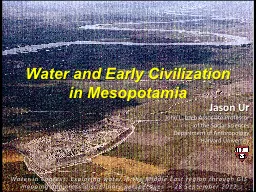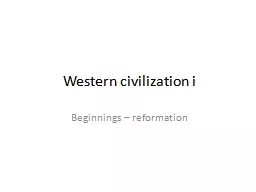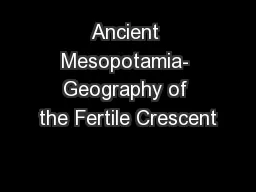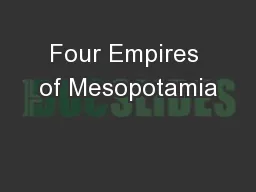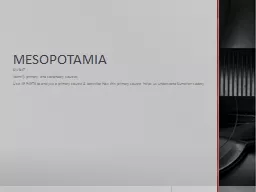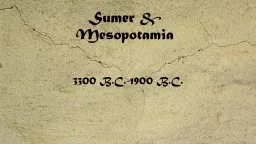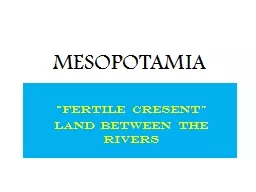PPT-Water and Early Civilization in Mesopotamia
Author : ellena-manuel | Published Date : 2016-07-01
Water in Context Exploring water in the Middle East region through GIS mapping and crossdisciplinary perspectives 28 September 2012 Jason Ur John L Loeb Associate
Presentation Embed Code
Download Presentation
Download Presentation The PPT/PDF document "Water and Early Civilization in Mesopota..." is the property of its rightful owner. Permission is granted to download and print the materials on this website for personal, non-commercial use only, and to display it on your personal computer provided you do not modify the materials and that you retain all copyright notices contained in the materials. By downloading content from our website, you accept the terms of this agreement.
Water and Early Civilization in Mesopotamia: Transcript
Download Rules Of Document
"Water and Early Civilization in Mesopotamia"The content belongs to its owner. You may download and print it for personal use, without modification, and keep all copyright notices. By downloading, you agree to these terms.
Related Documents

